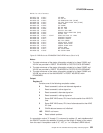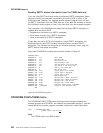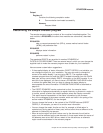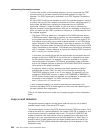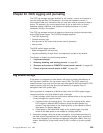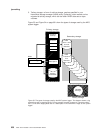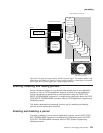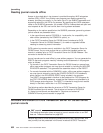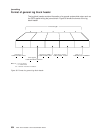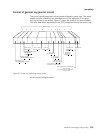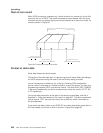
Chapter 23. CICS logging and journaling
The CICS log manager provides facilities for the creation, control, and retrieval of
journals during real-time CICS execution. Journals are intended to record, in
chronological order, any information that you may later need to reconstruct data or
events. For example, you could create journals to act as audit trails; to record
database updates, additions, and deletions for backup purposes; or to track
transaction activity in the system.
The CICS log manager controls all logging and journaling using services provided
by the MVS system logger. The CICS log manager supports:
v The CICS system log
v Forward recovery logs
v Auto-journals for file control and terminal control operations
v User journals.
The MVS system logger provides:
v Media management and archiving
v Log data availability through direct, and sequential, access to log records.
The chapter is divided into the following sections:
1. “Log stream storage”
2. “Enabling, disabling, and reading journals” on page 631
3. “Structure and content of COMPAT41-format journal records” on page 645
4. “Format of journal records written to SMF” on page 653.
Log stream storage
A log stream is a sequence of data blocks, with each log stream identified by its
own log stream identifier—the log stream name (LSN). The CICS system log,
forward recovery logs, and user journals map onto specific MVS log streams. CICS
forward recovery logs and user journals are referred to as general logs, to
distinguish them from system logs.
Each log stream is a sequence of blocks of data, which the MVS system logger
internally partitions over three different types of storage:
1. Primary storage, which holds the most recent records written to the log stream.
Primary storage can consist of either:
a. A structure within a coupling facility. (The use of a coupling facility allows
CICS regions in different MVS images to share the same general log
streams.) Log data written to the coupling facility is also copied to either a
data space or a staging data set.
b. A data space in the same MVS image as the system logger. Log data
written to the data space is also copied to a staging data set.
2. Secondary storage—when the primary storage for a log stream becomes full,
the older records automatically spill into secondary storage, which consists of
data sets managed by the storage management subsystem (SMS). Each log
stream, identified by its log stream name (LSN), is written to its own log data
sets.
© Copyright IBM Corp. 1977, 1999 629



